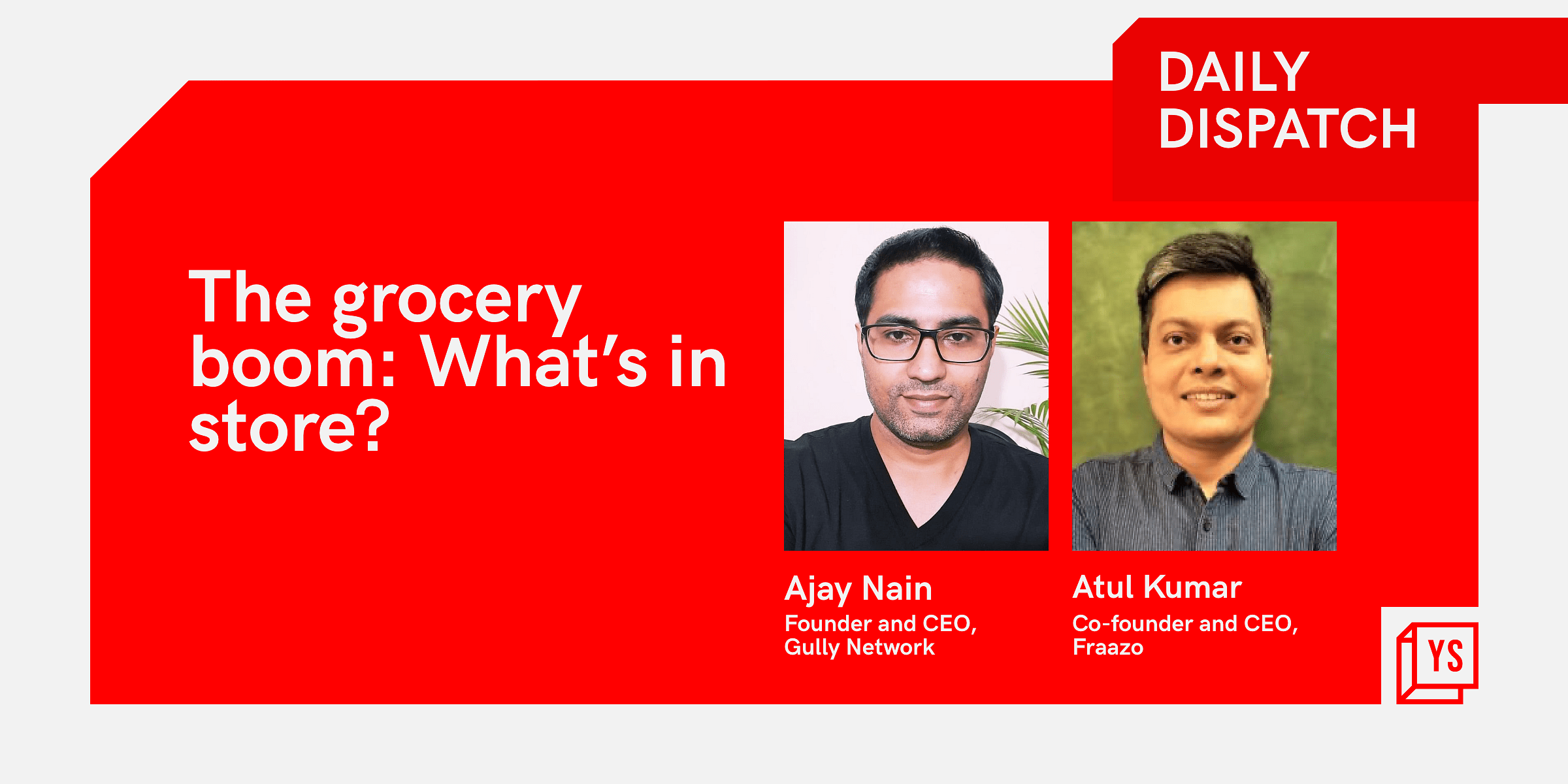As consumer behaviour changed amid the COVID-19 pandemic, the grocery market of India found traction in its online channels. Factors such as urbanisation, tech-savvy consumers, and social distancing due to the pandemic have turbocharged the growth of this sector.
According to RedSeer Consulting, the e-groceries segment has grown by about 75 percent in the lockdown period alone. While traditional models will continue to dominate the market share, modern retail is expected to accelerate.
The market is expected to see a $200 billion jump by 2024 driven by new segments and accounting for India’s over 100 million online shoppers.
To unpack this sudden boost in the grocery sector, Ajay Nain, Founder and CEO, Gully Network and Atul Kumar, Co-founder and CEO, Fraazo, participate in a panel discussion held by YS’s Daily Dispatch.
The boom in online grocery shopping
The move to online shopping was quite visibly noticed at Fraazo. Atul Kumar, Co-founder and CEO, Fraazo, says,
“The demand from customers has been phenomenal for us. We have grown more than 15X in the last 12 months. There is a big shift in terms of customers who were maybe buying physically to online purchase of groceries.”
This growth at Fraazo, he adds, is primarily driven by two factors — the convenience of buying online and the improved quality of produce due to the integrated supply chain.
While online shopping has seen a massive surge, traditional stores continue to seize a substantial portion of the market share. Gully Network, a full-stack retail store management startup, offers solutions for mid-size departmental stores.
Ajay Nain, Founder and CEO, Gully Network, emphasis on the need for an omnichannel ecosystem. “We believe that things should be omnichannel in nature so that’s what we are building. About 97 percent of the market is offline and three percent is online,” he says.
Gully Network is working with omnichannel brands and around 10 percent of sales is coming from the online channel, according to Ajay. The company is claimed to have grown 5X in the last one year.
Along with online penetration, the grocery market has seen competition in fast delivery of orders as well. As more brands such as Grofers, Ola, BigBasket, and Zepto enter the market, the “10 minutes” delivery has caught eyeballs.
Atul explains the journey from 90 minutes delivery to 10 minutes delivery. “Fast delivery is going to be more or less about hygiene. If you are not able to deliver fast, it is unlikely that you will survive in the online space,” he says.
There are three ingredients, he adds, for super-fast delivery to be successful. The first one is having a closely-knit dark store network that brings you closer to the customer for deliveries.
“We are opening one dark store every 8 hours. That’s the pace at which we have to open to meet the demand that we are able to see,” he says.
The second is the efficiency of operations at the store level and third, the fleet size of last-mile goods delivery.
The road forward
Gully Network has been adding around 10 stores a month and has very recently launched in three new cities, according to Ajay. The plan from here is to expand to 10 cities and to grow 5-6X in the next one year. The brand’s focus is majorly on Tier 2 cities where online presence isn’t as large as Tier 1 cities.
In the case of Fraazo, the brand intends to reach almost 20 million-odd households in the next 12-18 months. It also plans to expand to 15 cities in the 6-8 months.



![Read more about the article [Funding alert] D2C fashion brand Bewakoof raises $4M from IvyCap Ventures](https://blog.digitalsevaa.com/wp-content/uploads/2021/03/Funding-1587044486257-300x150.png)






